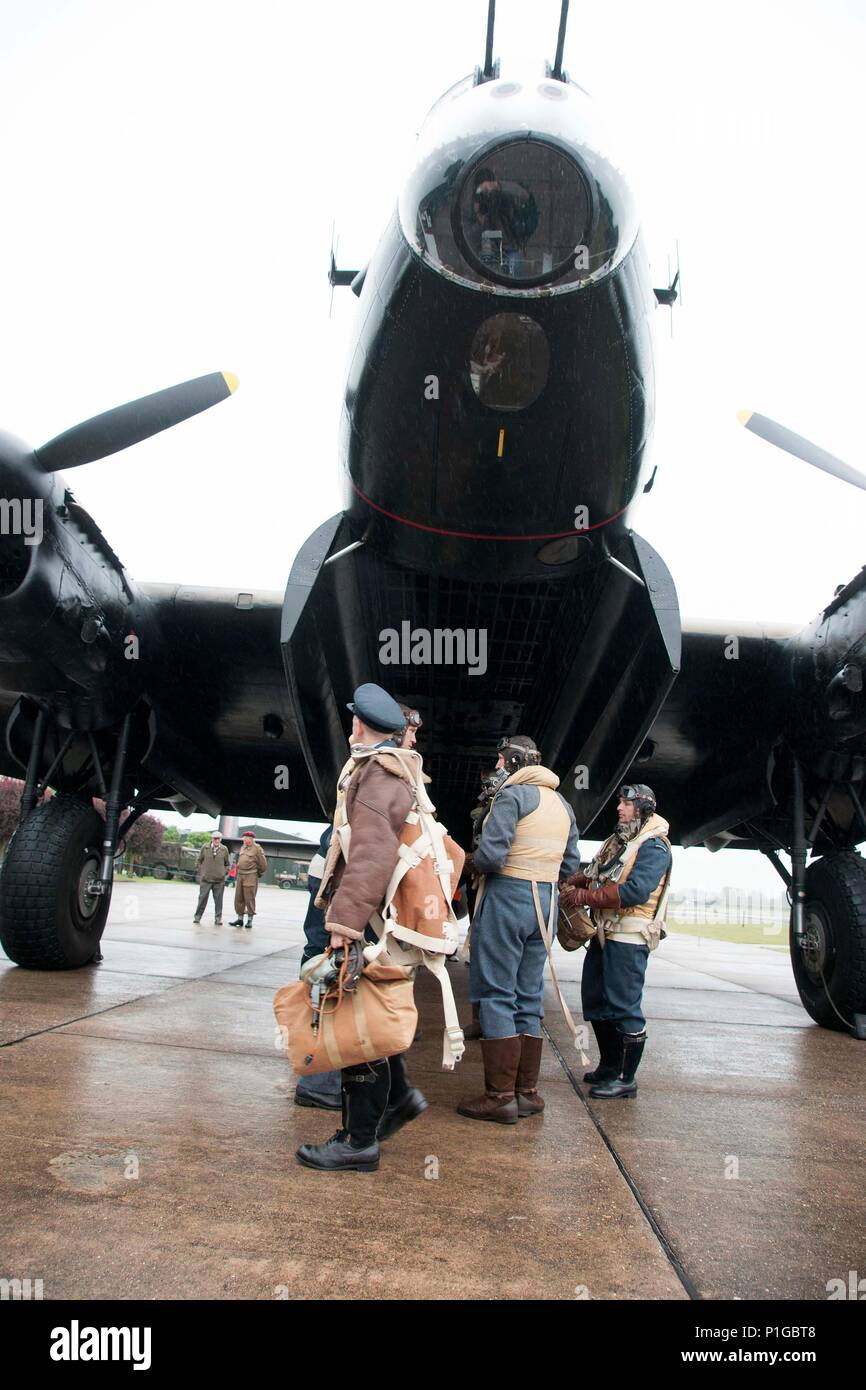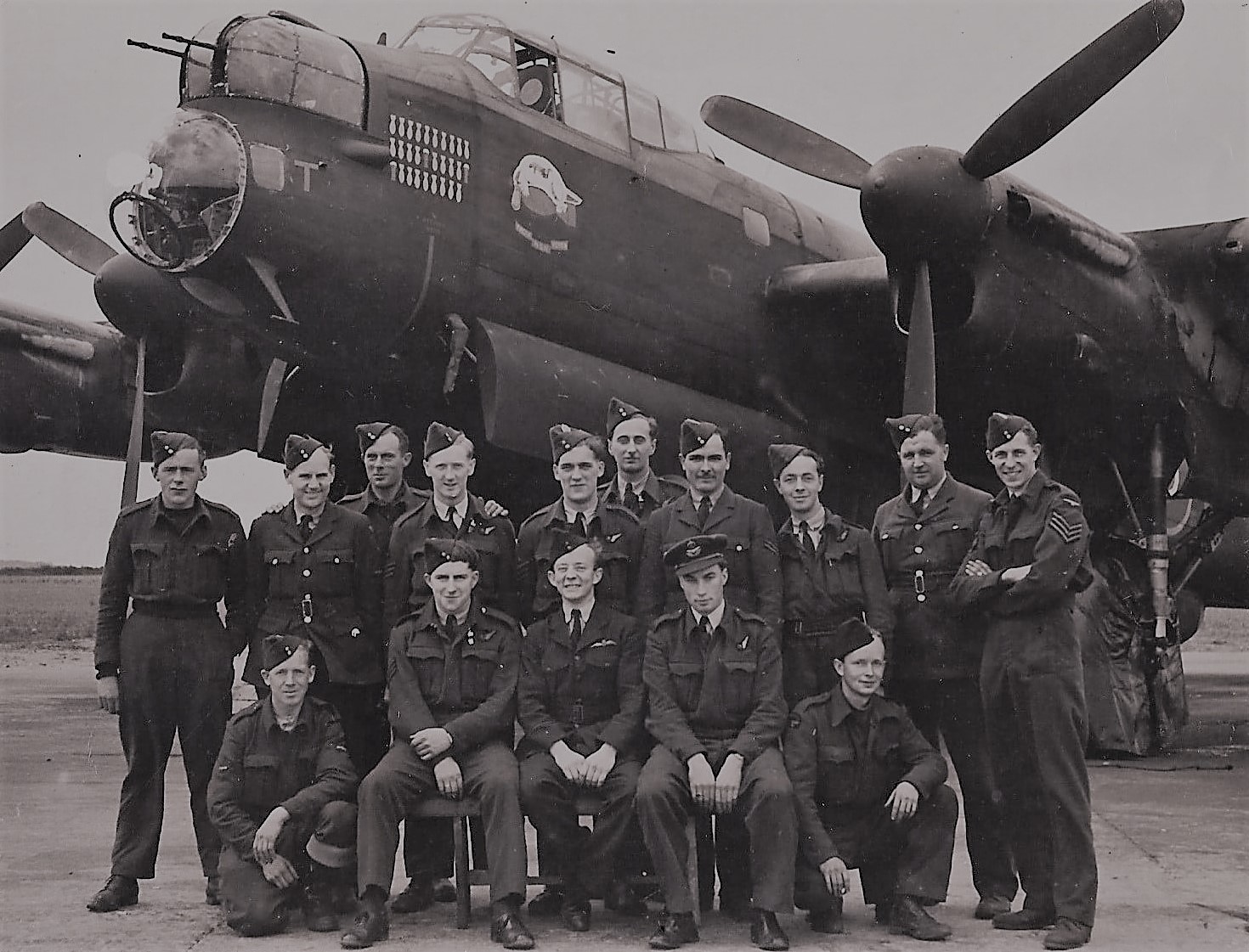
In flight he was constantly checking his panels to monitor oil, fuel and pressure gauges to assess engine performance and fuel consumption from the Lancaster’s six wing tanks. He assisted the pilot on take-off and landings by handling the throttles. Seated beside the pilot on a seat which was hinged to permit crew to travel to and from the bomb-aimer’s compartment in the nose of the aircraft was the flight engineer.

Behind his head was the only piece of armour plating that a Lancaster carried. Regardless of rank, the pilot was always in command of the aircraft. As well, the bomb-aimer was responsible for operating the front gun turret positioned directly above him, although this was not necessary on most operations. Lying on his stomach and looking through the bombsight out the large perspex blister, the bomb-aimer would guide the aircraft to the target and release the bomb load. The bomb-aimer’s compartment was situated in the front of the aircraft at a level below that of the main cockpit. They generally spent many of their off-duty hours together as well as the first day or two of a leave. Most felt that their crew was one of the best in Bomber Command. This camaraderie was crucial to maintaining morale and efficiency in the air. However, they quickly bonded together to form a very special, tightly-knit group. Invariably all were very young, a man of twenty-five would likely be referred to as the “Old Man” or “Grandpa.” They were of different ranks, came from all walks of life, and often from more that one country. All aboard were killed.The operational life of this aircraft (ND514) was nine days.Ī Lancaster crew numbered seven – the pilot, flight engineer, navigator, wireless (radio) operator, bomb aimer/ front gunner, mid-upper gunner, and rear gunner.

The aircraft was flown to Berlin by another crew the following nightbut was destroyed while attempting a crash landing. 44 Squadron Lancaster crew.They had just returned from their thirtieth operation (thus completing their “tour”) and their ninth tripto the most dangerous target of all, Berlin. The bond between the members of a bomber crew was intense and one can sense their spirit in the above photograph.It was taken on 29 January, 1944 of a No. Snow, of Murwillumbah, Australia, donated the photograph.He served with the Royal Australian Air Force and is currently a member of the Nanton Lancaster Society. Five of the crew were serving together on a second tour when hostilities ceased in May, 1945. The crew-members in this photograph are (l-r) Alf Holden (navigator), Vic Laker (wireless operator), Freddy Garrett (rear gunner), Quentin Snow (mid-upper gunner), Bernie Soper (bomb aimer), Bert Wright (pilot), and Bob Bateman (flight engineer).
#Lancaster bomber crew positions portable#
Canada’s Bomber Command Memorial – Portable Version.


Nose Art – blog If a bomber crew was assigned a particular aircraft, they were sometimes able to choose the name and artwork and this enabled a powerful bond to develop between the men and the machine.Avro Lancaster Blog During World War II the Lancaster was the most successful bomber used by the Royal Air Force and the Royal Canadian Air Force.Dambusters Raid The Dambusters Raid 16/17 May, 1943.Bomber Command – blog The bomber offensive mounted by the Royal Air Force, the Royal Canadian Air Force, and the air forces of other Commonwealth countries during the Second World War has been described as the most continuous and grueling operation of war ever carried out.British Commonwealth Air Training Plan (BCATP).


 0 kommentar(er)
0 kommentar(er)
